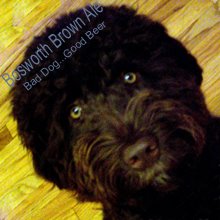Señor Brew™ has been thinking; I know, this is dangerous. But as those loyal readers of this blog (I think we're up to 30 now) know, Señor Brew™ likes to get the maximum amount of variety out of his short amount of brewing time. Partigyle brewing, and splitting a batch among yeasts is one way to this.
But what if you were to boil a batch of beer, say for an hour, draw off a part of it, chill it and get it in the fermenters while you're still boiling the rest of it, maybe adding extra hops to finish it out. The second beer would be more bitter, with more concentrated flavor, and a higher alcohol content due to the longer boil. It would be fairly pronounced, because with the removal of a portion of the volume for the first beer, the remainder would have a lower volume to surface area, and evaporation rates would go up. Plus while the total amount of chilling time would be about the same, each portion would chill rather quickly, and the first part would be chillin' while the second part be boilin' (A reggae song just came while Señor Brew was finishing this sentence).
I'm thinking that this would work for a pale ale/IPA, bock/doppelbock, etc.
What do you think, Brewbuds? Has anybody tried this? Pros, cons, ex-cons?






I used that method for a berliner and a hefe. Aside from the fact that I don't like hefes, it worked fine. You need a tiny amount of hops and a pretty short time on the fire to add 15 IBUs to half a batch of beer.
ReplyDeleteA few things to consider, although I would not classify any of them as problems. You'll concentrate color as much as flavor, fine for the bocks, more of an issue for the pales. Adding the same heat to a small, concentrated batch may give you melanoidins and carmelization. After an hour of boiling, your hops have given you almost all the IBUs they have.
I am a dedicated splitter as well, so here is another method you can add to your bag of tricks. Boil a batch with bittering hops only. As soon as you kill the heat, split the batch and steep separate flameout hops. Combining a few of these splitting methods, you can easily make two beers that would seem to have nothing in common.